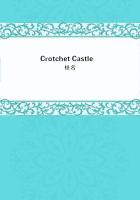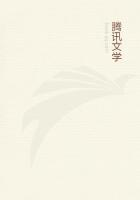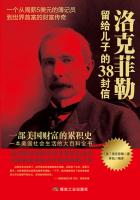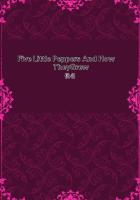and, paradoxical as it may seem to say so, he must distinguish it with great accuracy from others like it, in order to remain blind to it when the others are brought near.He discriminates it, as a preliminary to not seeing it at all.
Again, when by a prism before one eye a previously invisible line has been made visible to that eye, and the other eye is thereupon closed or screened, its closure makes no difference; the line still remains visible.But if then the prism be removed, the line will disappear even to the eye which a moment ago saw it, and both eyes will revert to their original blind state.
We have, then, to deal in these cases neither with a blindness of the eye itself, nor with a mere failure to notice, but with something much more complex; namely, an active counting out and positive exclusion of certain objects.It is as when one 'cuts' an acquaintance, 'ignores'
a claim, or 'refuses to be influenced' by a consideration.But the perceptive activity which works to this result is disconnected from the consciousness which is personal, so to speak, to the subject, and makes of the object concerning which the suggestion is made, its own private possession and prey.
The mother who is asleep to every sound but the stirrings of her babe, evidently has the babe-portion of her auditory sensibility systematically awake.Relatively to that, the rest of her mind is in a state of systematized anaesthesia.That department, split off and disconnected from the sleeping part, can none the less wake the latter up in case of need.So that on the whole the quarrel between Descartes and Locke as to whether the mind ever sleeps is less near to solution than ever.On a priori speculative grounds Locke's view that thought and feeling may at times wholly disappear seems the more plausible.As glands cease to secrete and muscles to contract, so the brain should sometimes cease to carry currents, and with this minimum of its activity might well coexist a minimum of consciousness.On the other hand, we see how deceptive are appearances, and are forced to admit that a part of consciousness may sever its connections with other parts and yet continue to be.On the whole it is best to abstain from a conclusion.
The science of the near future will doubtless answer this question more wisely than we can now.
Let us turn now to consider the RELATIONS OF CONSCIOUSNESS TO SPACE.This is the problem known in the history of philosophy as the question of the seat of the soul.It has given rise to much literature, but we must ourselves treat it very briefly.Everything depends on what we conceive the soul to be, an extended or an inextended entity.If the former, it may occupy a seat.If the latter, it may not; though it has been thought that even then it might still have a position.Much hair-splitting has arisen about the possibility of an inextended thing nevertheless being present throughout a certain amount of extension.We must distinguish the kinds of presence.In some manner our consciousness is 'present' to everything with which it is in relation.I am cognitively present to Orion whenever I perceive that constellation, but I am not dynamically present there, I work no effects.To my brain, however, I am dynamically present, inasmuch as my thought and feelings seem to react upon the processes thereof.If, then, by the seat of the mind is meant nothing more than the locality with which it stands in immediate dynamic relations, we are certain to be right in saying that its seat is somewhere in the cortex of the brain.
Descartes, as is well known, thought that the inextended soul was immediately present to the pineal gland.Others, as Lotze in his earlier days, and W.Volkmann, think its position must be at some point of the structureless matrix of the anatomical brain-elements, at which point they suppose that all nerve-currents may cross and combine.The scholastic doctrine is that the soul is totally present, both in the whole and in each and every part of the body.This mode of presence is said to be due to the soul's inextended nature and to its simplicity.Two extended entities could only correspond in space with one another, part to part, - but not so does the soul, which has no parts, correspond with the body.Sir Wm.Hamilton and Professor Bowen defend something like this view.I.H.Fichte, Ulrici, and, among American philosophers, Mr.J.E.Walter, maintain the soul to be a space-filling prin- ciple.Fichte calls it the inner body, Ulrici likens it to a fluid of non-molecular composition.These theories remind us of the 'theosophic' doctrines of the present day, and carry us back to times when the soul as vehicle of consciousness was not discriminated , as it now is, from the vital principle presiding over the formation of the body.Plato gave head, breast, and abdomen to the immortal reason, the courage, and the appetites, as their seats respectively.Aristotle argues that the heart is the sole seat.Elsewhere we find the blood, the brain, the lungs, the liver the kidneys even, in turn assigned as seat of the whole or part of the soul.
The truth is that if the thinking principle is extended we neither know its form nor its seat; whilst if unextended, it is absurd to speak of its having any space-relations at all.Space-relations we shall see hereafter to be sensible things.The only objects that can have mutual relations of position are objects that are perceived coexisting in the same felt space.A thing not perceived at all, such as the inextended soul must be, cannot coexist with any perceived objects in this way.No lines can be felt stretching from it to the other objects.It can form no terminus to any space-interval.It can therefore in no intelligible sense enjoy position.
Its relations cannot be spatial, but must be exclusively cognitive or dynamic, as we have seen.So far as they are dynamic to talk of the soul being 'present'


